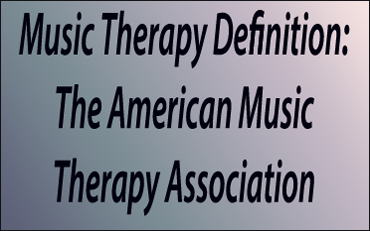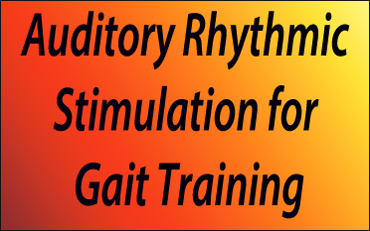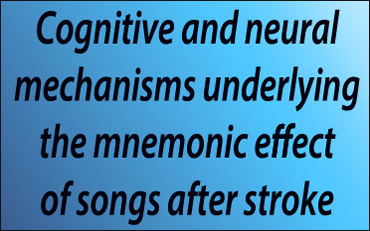Music Therapy Protocols
Overview
The information on this page is derived from research articles, books, websites, presentations, and collaborations with music therapists. It is also derived from the personal experience of the author, Martha Summa-Chadwick. Dr. Summa-Chadwick, although not a certified music therapist, has a vast amount of experience working with children who have intellectual and developmental disabilities.
Historically, music therapy began as a vocation during World War II, when musicians volunteered at military hospitals, where they facilitated instrumental and choral ensembles and created music for the soldiers that expedited recovery from war injuries. Caregivers noticed that these soldiers felt better after hearing or performing the music, but did not know why. Demand grew for more musicians at the hospitals, and it became evident that some kind of education was needed for the musicians in order to attain the highest possible therapeutic outcome for the soldiers. Training began in several venues, and the first university undergraduate degree program for music therapy was established in 1944 at Michigan State University. The Certification Board for Music Therapists was formed in 1983 to ensure a standard of excellence in the development, implementation, and promotion of an accredited certification program for safe and competent music therapy practice. Supporting professional organizations eventually unified in 1998 to create the American Music Therapy Association (AMTA), the current professional organization for music therapy.
Music therapy, as defined by the AMTA, is classified as the clinical, evidence-based practice of music interventions to accomplish individualized nonmusical goals within a therapeutic relationship. Board-certified music therapists earn a minimum of a bachelor’s degree, which includes a six-month clinical internship. Music therapy formed as a combination of musical training and social science. With the advent of brain-imaging equipment and techniques in the 1990s, knowledge grew in neuroscience regarding brain processing and music, and this information was incorporated into the education and training of music therapists. As the music therapy profession grew over time, a knowledge base was created and secured to give music therapists many different tools to utilize and protocols to follow.
Research shows that the neural reponses to music positively affect the entire central nervous system. Rhythm is the most important factor in most music utilized in therapy. The brain oscillations tend to synchronize with the music rhythm, and the heart rate is also affected. A high percentage of music therapy protocols result in brain plasticity, when new neural growth is developed as a result of musical engagement and task repetition. Some diseases or syndromes unfortunately affect neural areas that cannot grow new cells, but functional improvements are sometimes possible with music therapy. For example, Bijan’s Grandfather Hakeem has Parkinson’s disease that has affected an area of the brain within the basal ganglia, which cannot grow new cells. Even so, Grandfather Hakeem has success with gait training that helps him attain a better quality of life.
Music for therapy is most effective when it is the style of music that the individual prefers the most. Preferences could mean that a music therapist utilizes varying genres of classical, pop, jazz, rock, hip-hop, or children’s music. Clients who cannot express a particular musical preference are more likely to respond to the music popular during their young adult years. For example, someone affected by dementia who was born in the early 1950s and who has lost the ability to initiate speech may have a favorite genre of musical influences from the mid-1960s through early 70s, such as the Beatles, Carole King, or Aretha Franklin. Different people will enjoy various genres of classical, jazz, Broadway tunes, rock, hip-hop, or children’s songs.
In many rehabilitative cases, the tempo, or speed in beats per minute (BPM) of the music, is key to therapeutic outcomes. In music therapy, goals are created for each individual based on their diagnosis or challenge. For example, a hyperactive child may come to a music therapist to calm and stabilize active behaviors in order to facilitate learning social or academic skills. The child may enter the session walking at 132 BPM. Since the heart rate will be influenced by the music, a music therapist could musically match the 132 BPM and quickly decrease the music tempo to 120 BPM or less, as the child’s behavior and movement adjust to the new tempo.
Muscles involved in activities such as gait or symmetrical body movement will entrain to the music. The muscular flow automatically follows the natural pace of the music to ensure that the movement becomes smoother and more stable. For speech disorders, disabilities could range from a nonverbal child with autism to an adult who has aphasia following a stroke. Since music is processed in both hemispheres of the brain, singing can be possible even when there are issues with speech.
Music can also help cognition challenges. Cognitive malfunctions can result in problems with executive functioning, memory loss, or inability to focus attention on a task. Such challenges can result from neurodevelopmental disorders, disease, or trauma. For example, someone who had a stroke that affected the left frontal lobe may have the same challenges as someone who had left frontal lobe damage as a result of traumatic brain injury (TBI).
The following sections will focus on techniques that help the young protagonist Trevor with his motor skills, memorization of information, and ability to focus attention.


